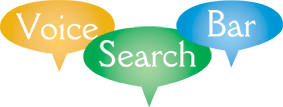Digital dictation
Digital dictation is a method of recording and editing the spoken word in real-time within a digital audio format.
advantages: Digital dictation offers several advantages over traditional cassette tape based dictation:
The user can instantly rewind or fast forward to any point within the dictation file to review or edit.
The random access ability of digital audio allows inserting audio at any point without overwriting the following text.
Dictation files can be transmitted electronically, e.g. via WAN, LAN, USB, e-mail, telephony, BlackBerry or FTP.
Large dictation files can be shared with multiple typists.
Digital dictation provides the ability to prioritize work.
Sound is CD quality and can improve transcription accuracy and speed.
Digital dictation provides the ability to report on the volume or type of dictation and transcription outstanding or completed within an organization.
Dictation audio can be recorded in various audio file formats. Most digital dictation systems use a lossy form of audio compression based on modelling of the vocal tract to minimize hard disk space and optimize network utilization as files are transferred between users. As a clarification, WAV is not an audio encoding format but a file format and has little or no bearing on the encoding rate (kbit/s), size or audio quality of the resulting file.
Digital dictation is different from Speech Recognition where audio is analyzed by a computer using speech algorithms in an attempt to transcribe the document. With digital dictation the process of converting digital audio to text is done using a digital transcription software application. It can be controlled via a foot switch which allows the typists to PLAY, STOP, REWIND and BACKSPACE.
There are two types of Digital dictation software:
1) Standalone digital sound recording software - Basic software whereby the audio is recorded as a simple file. Most digital sound recording applications are designed for individuals or a very small number of users, as they do not offer a network efficient way of transferring the audio files other than email, they also do not encrypt or password protect the audio file
2) Digital dictation workflow software - Advanced software for commercial organizations where audio is still played by a typist but the audio file can be securely and efficiently transferred The workflow element of these advanced systems also allows users to share audio files instantly, create virtual teams, outsource transcription securely, and set up confidential send options or 'ethical walls'. Digital Dictation workflow software is normally Active Directory integrated and can be used in conjunction with Document, Practice or Case Management systems. Typical businesses using workflow software are law firms, healthcare organizations, accountancies, or surveying firms.
©2008 VoiceSearchBar.com |
